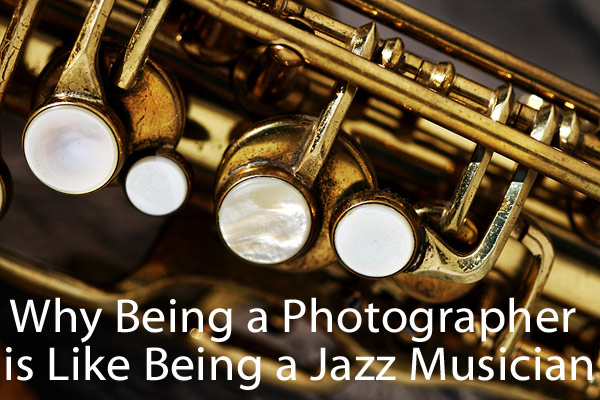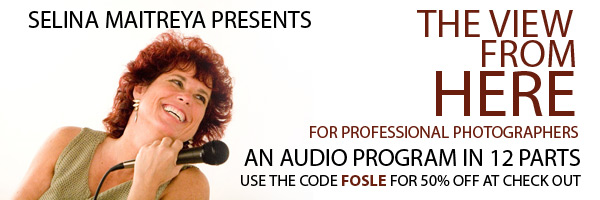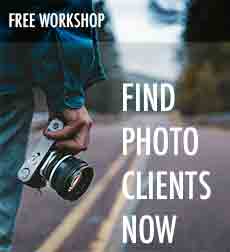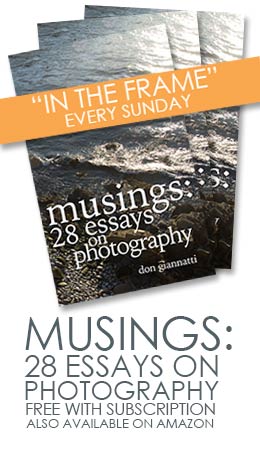I love jazz.
I always have. I can remember the first recording of jazz my dad played on our brand new stereo. It was a recording of Benny Goodman‘s Quartet with Buddy Rich on drums. I thought it was fascinating and glorious music.
I didn’t tell a soul that I liked it. That was between my dad and me.
Rock and Roll was king then, and any respectable 15 year old boy liked the Beach Boys and The Four Seasons. And while I did like that music, and still do, there was no way I was going to let my friends know that I liked jazz as well.
Then came a day when a buddy of mine came over with a stack of recordings that his uncle had given him. They were all “crappy jazz” as my friend put it. Perfect for shooting with pellet guns. Targets that would explode.
I got my pellet gun out and while he was getting some stuff from outside I took a record from it’s cardboard sheath and put it on my stereo.
I don’t know what it was that made me grab that album. Why I chose it instead of any of the other 20 or so that were there is still something I think about.
But the moment the needle hit the groove, and Coltrane played “Naima” – well, there was no way I was going to destroy these records. I got rid of my bud right away, and sat and listened to those albums till the following morning. No sleep. Coltrane, Pharoah, Miles, Sonny, Evans and Coleman. It wasn’t anything like the Goodman stuff. I had never heard anything like it. I still have those original albums, and about 3100 more.
I had started playing drums a few years earlier, and rock was my thing. Until that Saturday morning.
Soon, my friends found my musical tastes to be insufferable and it was only in college that I found kindred spirits.
Why the lead up about jazz?
Because jazz is like photography… in so many ways.
I have an 8Track stack of jazz for you to listen to if you care to take the plunge. Some of you will know these tunes, and some of you may find yourself in a magical place you have never been.
The music featured:
John Coltrane: Summertime
Miles Davis: In a Silent Way
Steve Kuhn: Years Later
Ornette Coleman: Focus on Sanity
Pharoah Sanders: Moniebah
Kenny Barron: The Traveler
Don Ellis: Quiet Longing
Martin, Modeski, and Wood with John Scofield: What Now
A jazz player, unlike many other musicians, has to be able to improvise. That improvisation usually takes form after a stated melody and over a known chord progression. A ‘tune’ may be played, then the players take turns improvising over the chords of the tune they played. And that takes skill, and commitment, and confidence and a complete and total understanding of the music and their instrument. Other than the chord progression underneath, there is no “score” or roadmap for the soloist.
Just like a photographer needs to have the skills, commitment, confidence and total understanding of what the tools, light and processes to make the photographs they hold in their minds eye. We have the tools, but out on any given situation there is no “score” or lighting diagram that will lead us to the image at the end. We become ‘soloists’ with our cameras.
I will state right now, that there is no bashing of any other musical style. This is not a dig toward rock or classical or pop. They each have their own set of challenges and problems in creating excellence.
However, in jazz, we find the need to be able to improvise to be a very close approximation of what we do when we make photographs. We need to be able to draw on our experience, our technical expertise and bring something of our own to the image. And that takes an amazing amount of practice, work and aesthetic awareness to bring to fruition.
Clark Terry, a renown trumpet player, said it best: “Imitate. Assimilate. Innovate.”
Imitate:
Learning how to do things means learning how others did them. We learn by imitating the knowledge, technical skills and product of those that went before. We want to know how someone did something we like. We can go to school where we learn how to do what the ‘masters’ did. We practice, practice, practice.
In music, a player learns the scales, chords, theory of music. They practice their instrument and work with the music that is written. They strive to be proficient in all aspects of their instrument. From Vivaldi to Beethoven, the theory of music is taught to bring a sense of classicism, of heritage, to the musician. While I think it may be totally possible to understand Stravinsky without a knowledge of Beethooven and Mahler, there would have been no Stravinsky without the work of those before him. He studied them to be able to do what he did.
Many hours and hard work is expended toward learning the basics, the traditions, the theory and the structure of the music of those who came before. It is necessary in art, I believe, to be able to understand what was in order see what could be.
As a student in music school, I spent untold hours learning how to write music in the style of_____. At the time I both loved and hated it. I wanted to write my own, but I knew I had to learn the skills. In my drumming I was still trying to play like Roach and Morello. I needed to learn how they did what they did. Technically and musically.
Photographers begin by working toward understanding light, and exposure. The camera has many ways of capturing light, and a photographer wants to understand that skill set, and be proficient in the process.
In schools they study the masters, and how to expose/print the images to get the quality that they study. Most schools still work with film and silver paper. They understand the great knowledge that is learned by knowing how to do the traditional aspects of photography. “Placing” exposure, the “Zone System“, ways to compensate for the challenges of light that is too flat, or too contrasty, or too dark are all important for the photographer in their “imitate” stage.
Learning how to expose a sheet of film, place the exposure, process for contrast, and print with refinement teaches so much about the art of the craft. It lets a photographer begin to ‘see’ the process as part of the product. It also lets the artist see the product as an end in itself. How a photographer gets an image that is wonderful is not as important as the image itself, but the knowledge of the process can explain the technical skills needed to imitate. And imitation becomes the basis for assimilation.
Assimilate
A jazz musician many times begins the journey into jazz after (and during) the learning process. They discover Miles or Trane and begin to learn the scales they used. They start to read the charts in Downbeat and learn to play the solos from their favorites. This is a very important time for jazz players. The music both pushes the limits of their skills, but also challenges their musicianship.
Jazz musicians have to be able to play above their skill sets in many instances. Their knowledge of the music has to be nearly absolute in order to improvise the solos, or ‘make it up’ as they go. There can be no hesitation, no flaws in the fingering or failure to connect. It is extremely stressful and exhilarating at the same time. They listen to the ensemble behind them, taking in their musical contributions even as they are working on their solos above.
Photographers learn their craft and their tools so well, that they can observe and create. Deconstructing an image and then recreating it becomes nearly second nature. The knowledge of shadows and edges and speculars and contrast means that looking at another image can bring forth the tools needed to copy the work. Photographers must work with their subjects much as a musician works with his ensemble – watching and listening and looking to capture something unique.
We know the systems and tools so naturally, that ‘copying’ slowly gives away to the assimilation of the knowledge of the craft. We can do what we want, and we can ‘make it up’ as we go. We can take the skills we have learned from the imitation phase and apply it to the work at hand. Confidence in our abilities means we have mastery over what is necessary.
Many photographers, and jazz musicians, and artists of all kinds, get into this state and stay there. And we see and hear their work every day. And we enjoy it. There are many ‘clones’ who offer wonderful entertainment, and reaching this point with some finesse is an achievement in itself.
Innovate
A jazz musician who has assimilated the work and techniques of Miles, Rollins and Terry will begin to break out a bit. Taking what they know, and adding little things they think of themselves; a new way of working over the chords, or a rhythm that seems so fresh that others begin to imitate it. The innovation phase has been achieved. Now the jazz musician is no longer making someone else’s music, they have moved on to their own.
Photographers reach this point as well. They see their work moving beyond the assimilation aspect and begin to put it all together to make a visual statement that is unique to them… a body of work that transcends the work of the assimilation period. Occasionally we call this work ‘personal’ or ‘artistic’ and we separate it from our commercial work by many means, fearing our commercial clients will not ‘get it’ or find it too far out of the genre we are known for.
Eventually that vision becomes more and more infused into our work, and the innovation stage has been achieved.
Every time we go out to make an image, we are bringing the history of photography with us. We are bringing the techniques and knowledge and skill sets that we have practiced on so long to the forefront. And we begin to improvise using the tools and skills to create something real. Lighting and its tools have become almost second nature, and the work progresses without the ‘win/fail’ of the “practice” but with the confidence of the knowledge.
Photographers, like jazz musicians, have no score – no roadmap, chart or global systematic approach. Every bar is a challenge and an opportunity to play something new. Every scene is a chance to create a vision that has not been presented before.
I love both photography and jazz. I see images when listening to music, and I hear music when creating and looking at photographs.
Jazz musicians practice their instruments in order to become more than proficient, they seek that point where the instrument becomes the conduit of their music to the listener. They study and learn from those who came before them to understand what has been done, and recognize what they have to do. From copying the great solos to producing great solos on their own, the progression and the passion and the practice and the execution continues unabated to the end.
Photographers practice their composition, exposure, light, subject interaction and more to become more than proficient with their camera. The camera becomes merely an extension of the vision of the photographer. They study the work of those who came before to better understand what has been done, and what they must do to move the art forward. Continual learning, practice, growth and exploration continues unabated to the end.
While these traits are consistent among all art forms, it is the ability to improvise and make something new in a moment… catch that phrase, or ‘feel’ a composition as it happens in front of the camera that makes the two connected like no other.
At least that is my take on it all.
BTW:
Some wonderful jazz photographers here:
Herman Leonard
William Gottlieb
Daniel Sheehan
Ron Hudson
Francis Wolff (Article) (images)
William Claxton – Images
Interestingly just as I finished this article, my friend Bill pointed me to the current article on The Online Photographer. A wonderful piece on jazz.
Thanks for coming along on this jazz/photo post. If you want to follow me on Twitter, you can. I also teach lighting workshops for photographers, and you can find that info here. Find out more about me at About.me. If you are interested in kicking your work up a notch, check out the Project 52 site for weekly assignments and critiques.
PS. I discovered me the day I discovered ‘Trane’. My life would have gone in a far different direction if I had not played that album that Saturday morning. Thank you, Mr. Coltrane.








Great post.
What it boils down to is that photography is an art. However not every photographer is an artist.
That’s the difference we see in today’s world where everyone can pick up a camera, but isn’t necessarily spending them time to reach these higher levels of image creation. In no way is that putting down those people, it’s just that without putting in the energy and time, you won’t get beyond the snapshot.
It’s also why the better camera doesn’t make better photographs, but the artist makes better photographs. Just like a better sax doesn’t play better music.
This post reminded me a bit about George Barr’s post on levels: http://www.luminous-landscape.com/essays/next-level.shtml
“What it boils down to is that photography is an art. However not every photographer is an artist.”
And that is not necessarily a bad thing. There is certainly a place for those who reach the assimilate phase. Not everyone can be an innovator.
But the comfort with the skill sets, and the confidence to be able to improvise is still as important.
Many times a craftsman is what is needed. Artists, by definition, are rare.
And that is not necessarily a bad thing.
Agreed. But it’s important that people understand the distinction.
Many times a craftsman is what is needed. Artists, by definition, are rare.
Indeed. For the most part value (and getting paid for your craftsmanship) is directly proportional to the supply of people who have a particular skill. If there were no difference between a GWC and a photographer, there would be no way of making a living in this field. The challenge that remains is to have demand base that can tell the difference.
I think that’s what has been eroding the market – that a segment of of the population who in fact can not tell the difference that has been sold a product that over-delivers and thus is over-priced. Now that they can buy at a price from people with a skill level more comparable to their ability to distinguish the difference the field has equalized. That’s a good thing, it just means there real market is smaller and more competitive. You can still succeed, but you have to step up to the plate.
Absolutely, Jan.
“You can still succeed, but you have to step up to the plate.”
And it becomes harder and harder as the bar moves higher and higher.
Look at Apple’s new iPad2 – there are other players in the market, but the iPad is most definitely the winner. Innovation AND quality AND a customer base who rave.
Not by accident. If the stuff they made wasn’t that much better, they would have much more competition.
I think that photographers can work toward that Apple model as well. Become excellent, deliver excellence and – above all – CULTIVATE a raving fan base.
Wow. What a great article. And wow again – interesting that you play(ed) the drums; I used to play the bass when I was younger. And it’s a long long way until you end up or even dream of going beyond S.M.V. (Stanley, Marcus, Victor), beginning with – who would have guessed? – Johann Sebastian Bach…
Hey Wofgang,
I fought tooth and nail against having to ‘learn the old stuff’ when I was in school. A wonderful composition teacher, David Cohen (ASU) asked me once if I had heard a specific Mozart piano concerto. I replied (with all the arrogance of youth) that I hadn’t and that I really didn’t want to spend much time listening to old stuff.
He smiled and quietly said: “If you haven’t heard it, it would be new to you. Right?”
Uhh…
Totally changed my perspective. One sentence, spoken with a smile.
And yes, I have heard the Mozart Piano Concerto in question. I must have… I have heard them all… several times.
Great post Don. My introduction to jazz (and classical for that matter) came much later in life than your but had a similar impact on me. Thanks for sharing.
Doesn’t matter when you discover it. As long as you do… heh.
BTW, Yeah – I am a big classical music fan. Just finished writing the first half of a choral piece for a high school honors choir. Second half has to wait until May.
Thanks for this motivating and inspiring article Don. Thanks also for your continual sharing with newbies like me.
Simply your best post ever, Don! Thanks.
Thanks for sharing Don.
Can I just say that I really look forward to your blog posts every time you do one. They seem to cut right through the bullsh*t (pardon my french) and really get down to the nitty gritty aspects of photography.
Thanks for keeping it real.
You spoke to me, man. I mean you had me spellbound.
Music has always been such an integral part of my life as has creative endeavors.
I played music since about four.
My spellbound moment was at Disneylands Carnation plaza, 10 feet away from Buddy Rich and seeing the Moeller technique used machine like precision. And Rich wasn’t a spring chicken then either. He was drenched in sweat. He was wholly INVESTED in his music. And his standard for his band was to do better next time, or you’re fired!. Lol, made Trump look soft.
Anyway, you struck a chord with me Don.
Thanks
I started as a photographer at age 8, and started playing saxophone at 16. I love the same names you posted here. Jazz and photography are very much alike. Unfortunately they are similar in another respect, many of those who see you doing what you love expect you to do it for free and for their direct benefit. I had to learn as a musician that I could play for free all the time. Whenever I wanted to, not when someone else said I should. I sincerely hope that emerging photographers, musicians and other creatives learn to value their work and not just give it away.
I have Mr. Gottlieb’s book. He signed it for me when I was starting to play clubs in NY. Great images. Thank you for reminding me to open it up again.
I’ve been in USA for 15+ years and grew up listening Deep Purple, LZ, Pink Floyd, and classical back in USSR.
But, something about jazz has always pulled me in to it. Right here, in USA, I took some time and I fell in love with Coltrane, Davis and others. Then I just had to get nicer system and now I am in heaven when I am with jazz. Sometimes people ask “Why jazz?”. I can’t explain it. I just say “play it and play it more”.
Last year I started my new hobby, photography and reading this I agree with you.
Thank you for the nice read Don. I follow your comments on Strobist too.
Karlen.